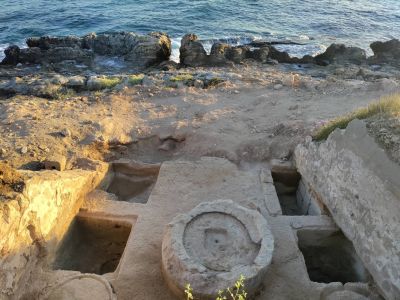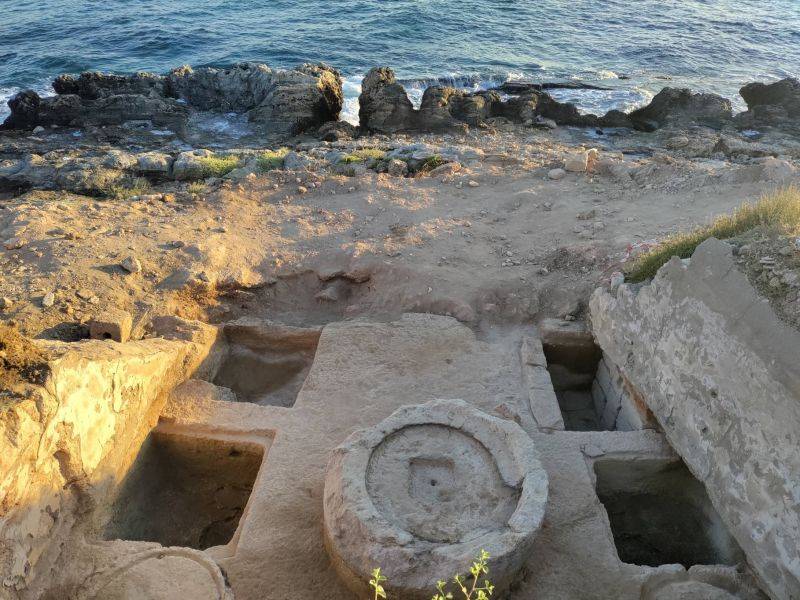
The Byzantine oil press. (Courtesy of the Archaeological mission at Anfeh)
After a two-year hiatus, the sound of picks once again resounded on the imposing rocky cape of Anfeh, in northern Lebanon.
The Anfeh Project started in 2010, headed by Nadine Panayot, an associate professor who is currently the curator of the American University of Beirut’s Archaeological Museum. This year, Panayot formed a joint mission between this museum and the Department of Archaeology and Museology of the University of Balamand.
The excavation campaign took place during the month of July with the support of the municipality of Anfeh, under the leadership of the General Directorate of Antiquities and with the help of a team of archaeologists and workers. Even though the work was short, it unearthed remarkable historical ruins, once again shedding light on the rich past of this beautiful coastal city.
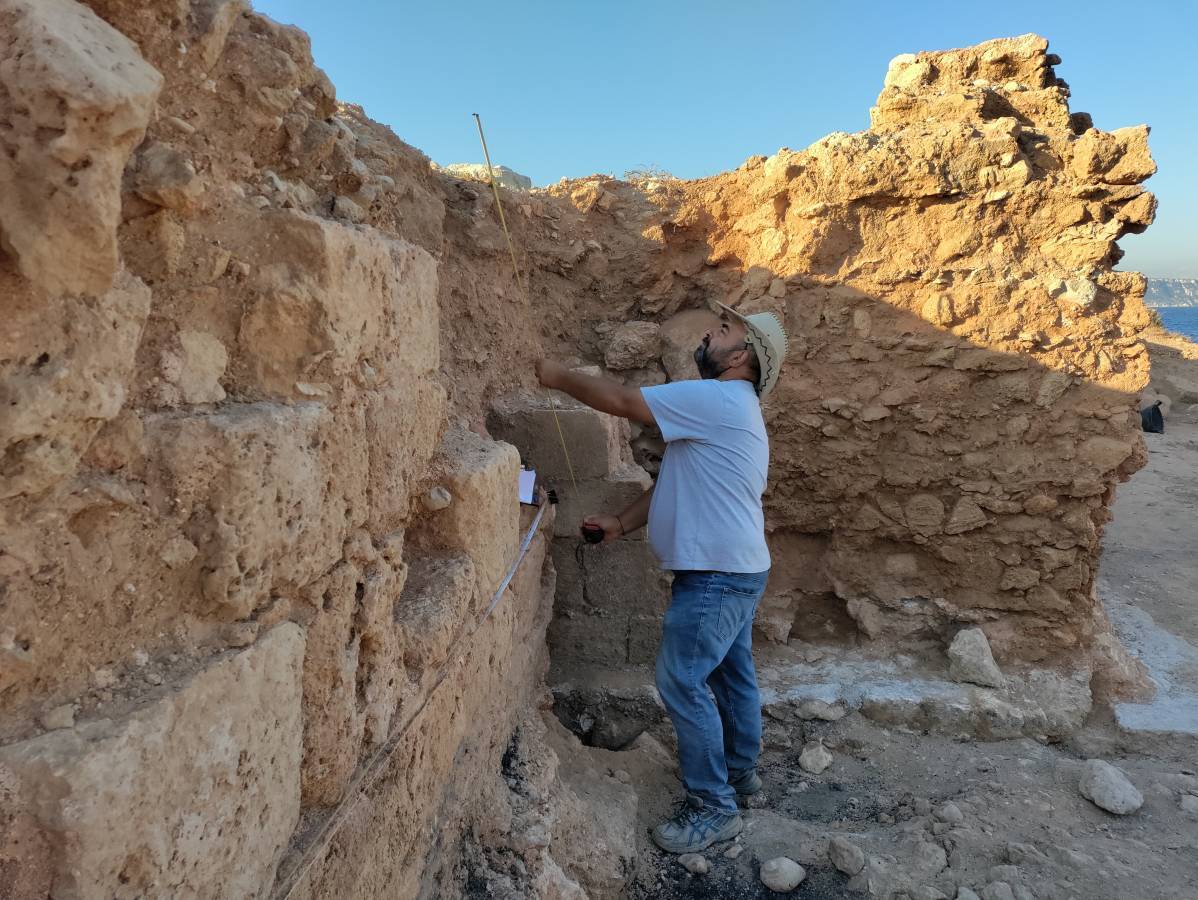 A section of the cross wall. (Courtesy of the Archaeological mission at Anfeh)
A section of the cross wall. (Courtesy of the Archaeological mission at Anfeh)
Two oil mills, two eras
Facing the sea, on the northern side of the site, two oil presses have been uncovered and can finally be admired.
Their presence is not surprising in this region, where the olive tree has always been king. The oldest press, entirely carved in the bedrock, is estimated to date back to the Byzantine period, around the 5th and 6th centuries. It includes almost all the main parts necessary for the production of oil from olives: in the center, the circular crushing basin in which a millstone, now disappeared from the site, separated the oil-filled pulp from the pit, and, on the sides, two pressing areas where the collected product was transformed into oil.
Each of these areas consisted of a press bed or circular slab on which the baskets filled with olive paste were stacked and a niche cut into the south wall in which the fixed end of a wooden lever was anchored. The other end of the lever would have been lowered onto the baskets by means of a counterweight, of which an example remains, and finally, a container in which the oil flowed out of the slab once the lever was activated.
To complete the device, a second container was reserved for refining the oil or storing the oil jars. A large cistern, located behind the crushing basin, must have contained the volume of water necessary for each stage of the oil-making process.
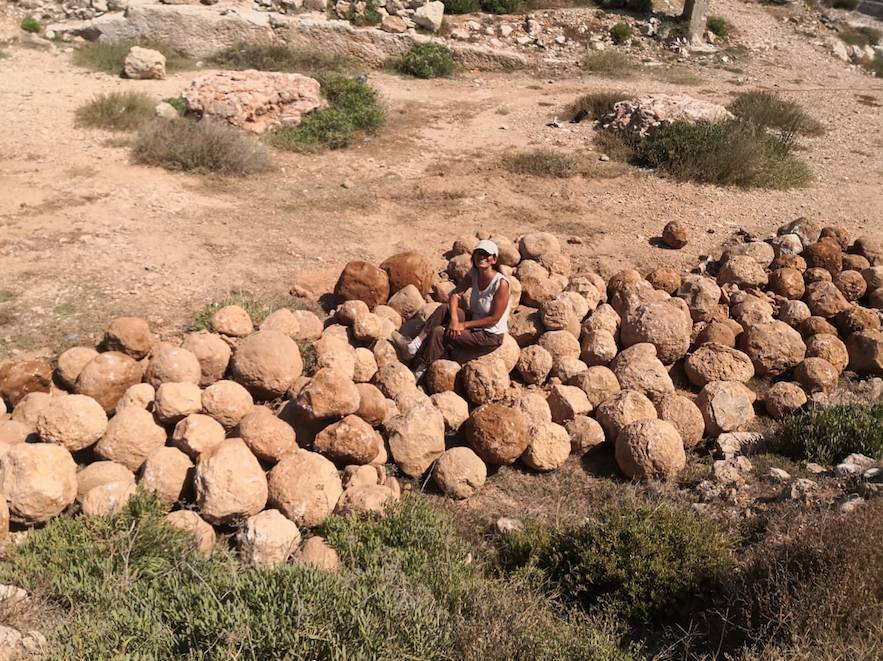 The huge pile of stone spheres found at the site. (Courtesy of the Archaeological mission at Anfeh)
The huge pile of stone spheres found at the site. (Courtesy of the Archaeological mission at Anfeh)
The second press is located in a room surrounded by two walls from the Frankish period, between the second and third ditches that cross and defended the site at the time of the Crusades. Here, too, we find the crushing area in the center, marked by another crushing basin and flanked by two presses. The difference is that in this oil mill, the mechanism that operated each of the levers consisted of a wooden screw of which the two cylindrical screw weights remain. The press beds have disappeared, but traces of the collecting vats where the oil was collected can still be seen.
The powerful walls of the fortress and a mysterious staircase
As for the powerful enclosure of the Crusader fortress from the 12th and 13th centuries that stood on the site, until now researchers only knew about its imprint, which runs along the edge of the peninsula, as well as some masonry.
The recent excavation has revealed an impressive new section of the fortification, on the eastern edge of its third ditch. It is an imposing wall preserved over an elevation of more than three meters and a length of 20 meters.
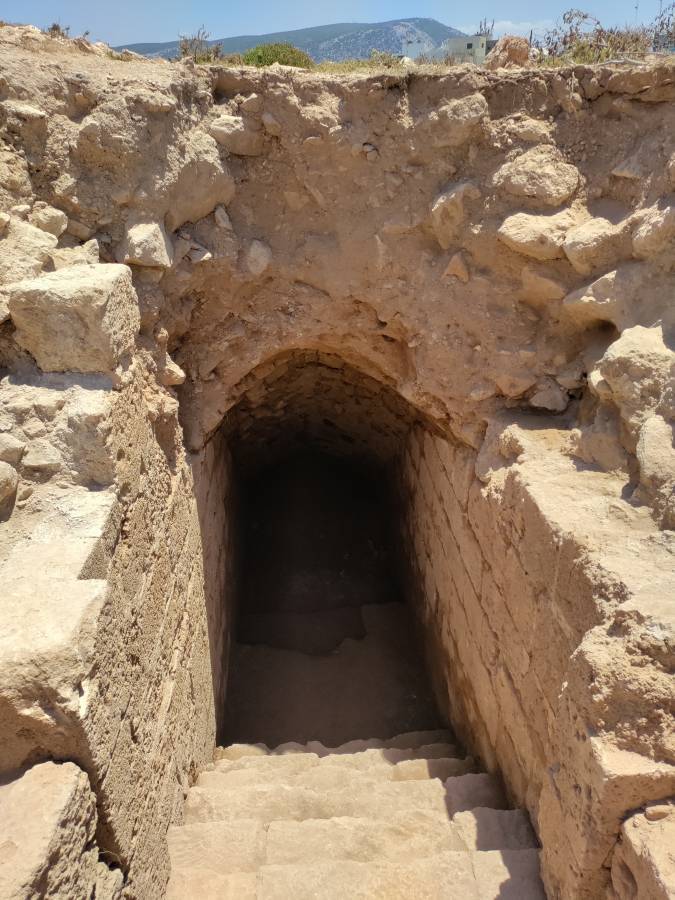 The staircase leading to the postern. (Courtesy of the Archaeological mission at Anfeh)
The staircase leading to the postern. (Courtesy of the Archaeological mission at Anfeh)
In an adjacent structure, a passage with an entrance is set into a thick wall. It leads to a vaulted staircase that is lost in the depths, completely obstructed by layers of earth. It soon became clear that this staircase, consisting of three flights of around 40 steps, does not lead to a treasure room (as many people had dreamed), but to the bottom of a second moat, through a doorway pierced into a projecting monumental wall.
This discrete postern, currently being cleared, is the first complete entrance to be found in the fortress, owing its preservation to its burial under tons of rubble.
Destroyed by stone spheres
At the time of its discovery, the vault at the top of the stairs was completely ruined. Excavators were surprised to discover the culprit, literally lying under their feet: a batch of a dozen stone spheres launched by the most powerful siege machines of the time, the famous trebuchet, or manjaniq in Arabic.
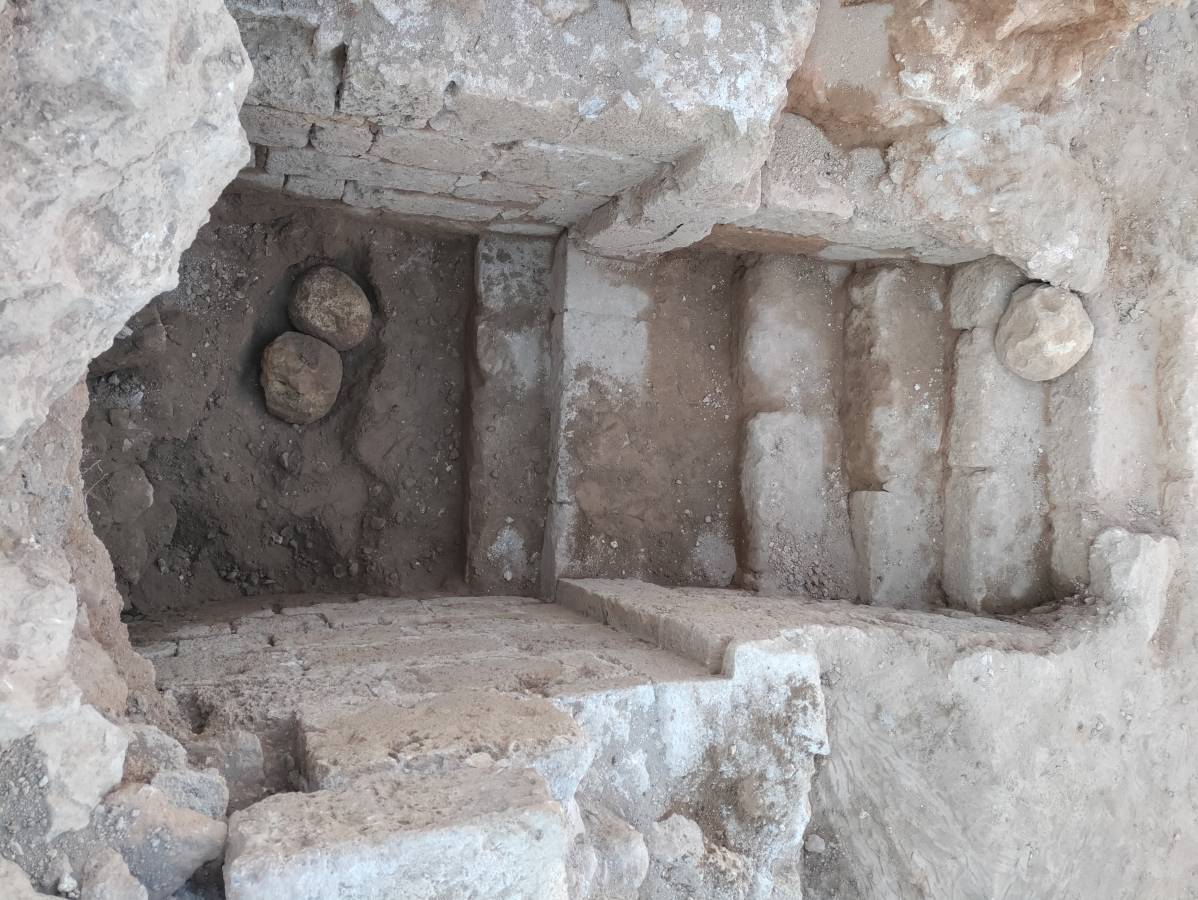 The stone spheres lying across the staircase. (Courtesy of the Archaeological mission at Anfeh)
The stone spheres lying across the staircase. (Courtesy of the Archaeological mission at Anfeh)
Other cannonballs of various calibers also seem to have caused the collapse of the upper parts of the nearby wall. The considerable number of these objects, about 200, suggests that the fortress had been subjected to a fierce bombardment in this particular spot.
If we refer to the literary sources of the Crusades, they reveal that the stronghold of Anfeh had been the object of two important sieges: in 1205, by Bohemond IV, Count of Tripoli, and a second time in 1276-1278, by the Templars. It is also possible that this bombardment took place in 1289 when the Crusaders were defeated by the Mamluks. The latter had used 19 trebuchets to succeed in seizing the city of Tripoli. Could they have sent some of these machines to launch the last assault against Anfeh?
The in-depth study of these different architectural ensembles as well as the examination of the material that accompanied them will soon allow researchers to lift the veil on new chapters of the site's history. A history that is gradually revealing itself and that never ceases to surprise, to the delight of archaeologists and all those interested in this priceless heritage.
To be continued.
This article was originally published in French at L'Orient-Le Jour.
